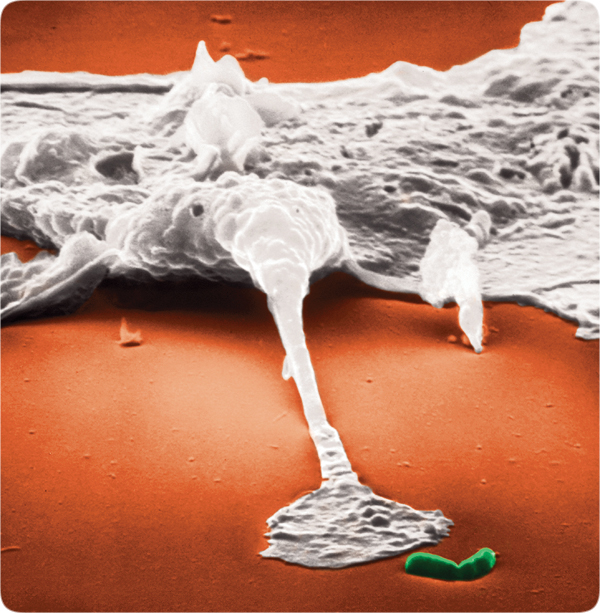Below is the online edition of In the Beginning: Compelling Evidence for Creation and the Flood,
by Dr. Walt Brown. Copyright © Center for Scientific Creation. All rights reserved.
Click here to order the hardbound 8th edition (2008) and other materials.
40. Improbabilities
To claim that life evolved is to demand a miracle. The simplest conceivable form of single-celled life should have at least 600 different protein molecules. The mathematical probability that even one typical protein could form by chance arrangements of amino acid sequences is essentially zeroa—far less than 1 in 10450. To appreciate the magnitude of 10450, realize that the visible universe is about 1028 inches in diameter.
From another perspective, suppose we packed the entire visible universe with a “simple” form of life, such as bacteria. Next, suppose we broke all their chemical bonds, mixed all their atoms, then let them form new links. If this were repeated a billion times a second for 20-billion years under the most favorable temperature and pressure conditions throughout the visible universe, would even one bacterium of any type reemerge? The chancesb are much less than one in 1099,999,999,873. Your chances of randomly drawing one preselected atom out of a universe packed with atoms are about one chance in 10112—much better.

Figure 18: White Blood Cell. A white blood cell is stalking the green bacterium shown at the lower right. Your health, and that of many animals, depends on the effectiveness of these “search-and-destroy missions.” Consider the capabilities and associated equipment this white blood cell must have to do its job. It must identify friend and foe. Once a foe is detected, the white blood cell must rapidly locate and overtake the invader. Then, the white blood cell must engulf the bacterium, destroy it, and have the endurance to repeat this many times. Miniaturization, fuel efficiency, and compatibility with other parts of the body are also key requirements. The equipment for each function requires careful design. Unless all this worked well from the beginning of life, a requirement that rules out evolution, bacteria and other agents of disease would have won, and we would not be here to marvel at these hidden abilities in our bodies.
A few “stem cells” in your bone marrow produce more than 100 billion of these and other types of blood cells every day. Each white blood cell moves on its own at up to 30 microns (almost half the diameter of a human hair) each minute. So many white blood cells are in your body that their total distance traveled in one day would circle the earth twice. © Boehringer Ingelheim International GmbH; photo by Lennart Nilsson.